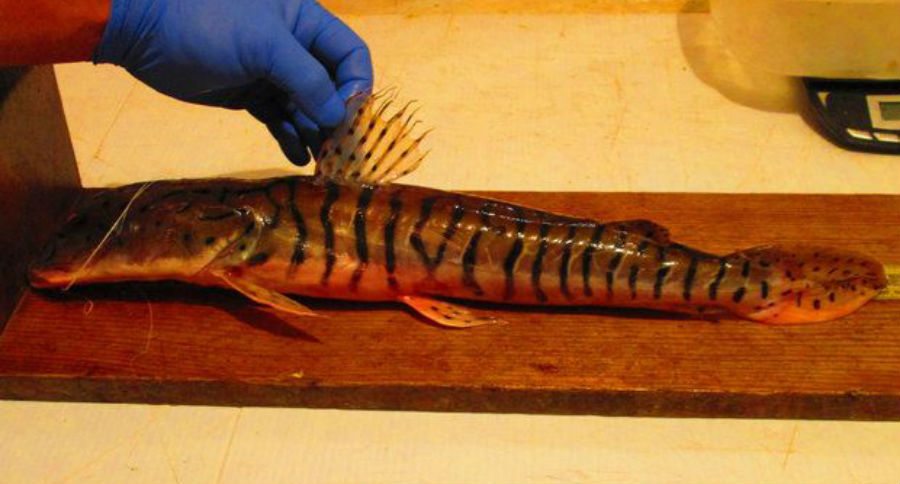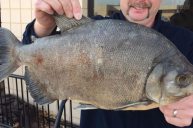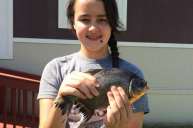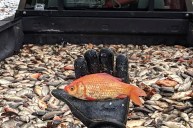Catfish serves as another reminder to NOT release pet fish!
People catch out-of-place fish quite often these days, as more people seem to be releasing their pet exotic fish into local lakes and rivers.
Usually, these fish are piranhas or pacu from South America. But every once in a while, there's an even bigger surprise, like this shovelnose catfish an angler reeled in from Louisiana's Atchafalaya River on July 3, according to NOLA.com.
The 19 ½ inch fish was obscure enough that it initially perplexed Louisiana Department of Wildlife and Fisheries biologist manager Jody David. When he and his colleagues finally identified it as a tiger shovelnose catfish from the Amazon, there was only one plausible explanation for it appearing in a Louisiana river. A released pet.
"It probably got too big for the tank, so the owner let it go," David told the news site. "That's the only way we think it realistically could have gotten into our waters."
The fish definitely came as a surprise to the angler, Barbara Ducote, who caught the colorful catfish on a worm near Melville. The current plans are for the unique fish to be mounted and displayed in a local store.
Meanwhile, the catch serves as another reminder for wildlife agencies and the public about releasing exotic species in lakes and rivers. Many wildlife agencies have stepped up efforts in recent years to educate people about the dangers of releasing such fish into the wild. It's become enough of an issue that the Utah DWR has devoted an entire section of their website to the dangers of releasing pet fish.
Usually, these released exotic fish turn out to be pacus. The omnivorous fish have been found in Michigan, Utah, New Jersey and California in recent years. Their cousin, the piranha has also been caught in Michigan recently.
So if you have a pet fish that's getting too big for its tank, do everyone a favor and contact an aquarium or local wildlife agency about ways to properly relocate it. The local ecosystems will thank you.
NEXT: HOW WELL DOES A BIRD LURE WORK FOR BIG BASS?




